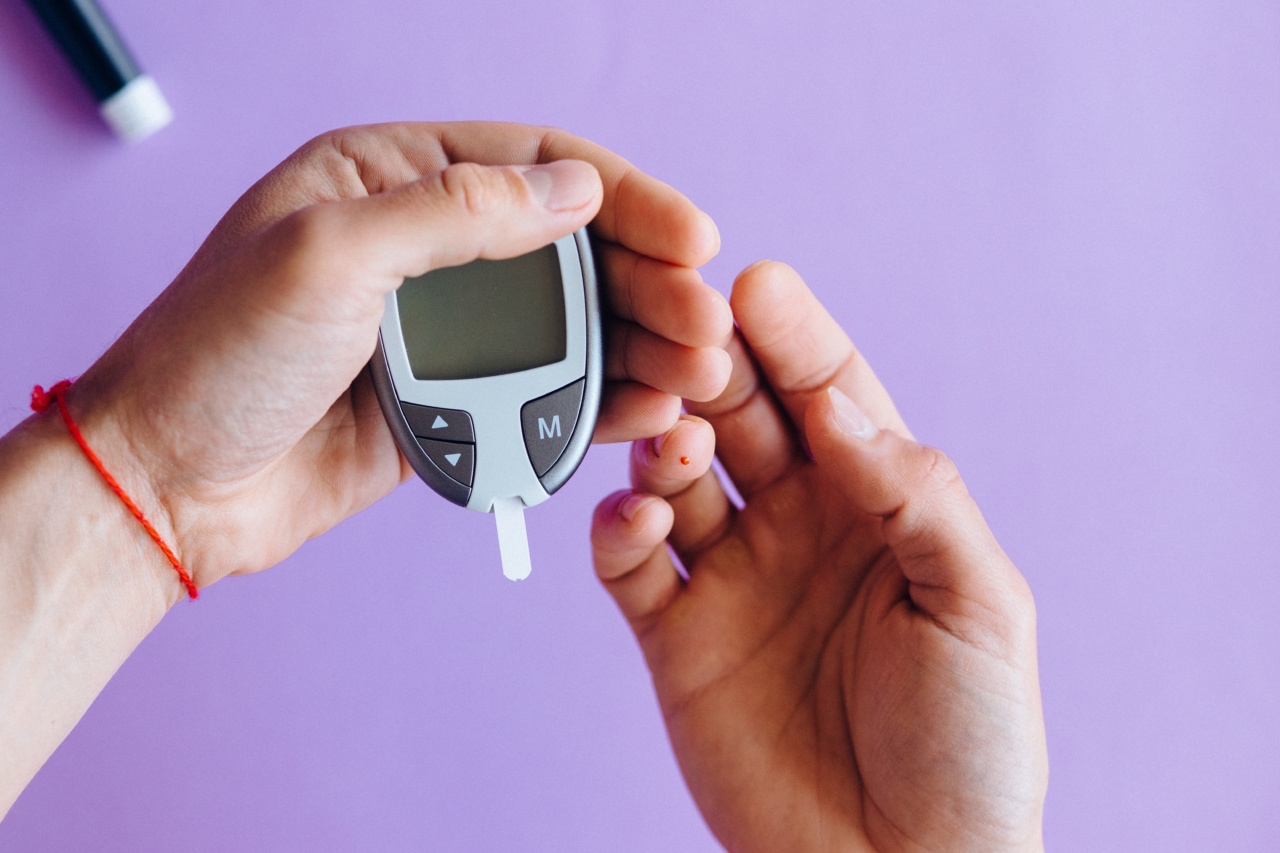Diabetes is a chronic disease that affects millions of people worldwide. It occurs when the body cannot effectively regulate blood sugar levels, leading to high levels of glucose in the bloodstream.
While there are various treatment options available, including medication and lifestyle changes, recent research has shed light on the potential benefits of certain meal patterns in managing diabetes.
The Role of Nutrition in Diabetes Management
Proper nutrition plays a crucial role in managing diabetes. The foods we eat directly impact our blood sugar levels, making it essential to choose meals that help regulate glucose production and utilization in the body.
A balanced diet rich in essential nutrients and low in processed sugars and unhealthy fats can contribute to improved blood sugar control.
Study Highlights the Effectiveness of Primary Meals
A recent study conducted by a team of scientists focused on exploring the impact of different meal patterns on blood sugar regulation in individuals with diabetes.
The study analyzed data from hundreds of participants and compared the effects of different meal compositions.
Interestingly, the results highlighted the effectiveness of consuming two primary meals a day for managing diabetes.
These primary meals, when designed to provide optimal nutrition, appeared to offer more significant benefits compared to the traditional three-meal pattern.
The Two-Primary-Meal Approach
The two-primary-meal approach involves consuming two main meals per day, typically referred to as brunch and dinner.
These meals are strategically designed to provide a balance of macronutrients and essential micronutrients while also regulating blood sugar levels.
For individuals with diabetes, brunch is typically consumed between 10 am and 12 pm and serves as a combination of breakfast and lunch.
This meal often includes a variety of whole grains, lean proteins, healthy fats, and low-glycemic fruits and vegetables. By incorporating these elements, the body receives a continuous supply of energy, helping to maintain stable blood sugar levels.
Dinner, which is the second primary meal, is consumed between 6 pm and 8 pm. This meal is similar in composition to brunch, focusing on nutrient-dense foods and avoiding excessive amounts of refined carbohydrates and sugars.
By spacing out these two primary meals, individuals can effectively manage their blood sugar levels throughout the day.
Benefits of the Two-Primary-Meal Approach
The two-primary-meal approach offers several potential benefits for individuals with diabetes:.
1. Improved Blood Sugar Control
By consuming a balanced and nutrient-dense brunch, followed by a similarly composed dinner, individuals can better regulate their blood sugar levels.
The inclusion of whole grains, lean proteins, and healthy fats helps slow down the digestion process, leading to a more gradual increase in blood sugar levels.
2. Weight Management
Managing body weight is crucial for individuals with diabetes, as excess weight can contribute to insulin resistance and poor glycemic control.
The two-primary-meal approach, when combined with portion control and a healthy lifestyle, can support weight management efforts and help individuals achieve their weight loss goals.
3. Increased Insulin Sensitivity
Insulin sensitivity refers to how effectively the body utilizes insulin to regulate blood sugar levels.
Research suggests that the two-primary-meal approach can improve insulin sensitivity, making it easier for individuals to manage their diabetes and potentially reduce their reliance on medication.
4. Enhanced Meal Planning
The two-primary-meal approach encourages individuals to carefully plan their meals, ensuring they incorporate a wide range of essential nutrients.
This meal planning process promotes healthier eating habits and can lead to increased variety and enjoyment in the diet.
Important Considerations
While the two-primary-meal approach shows promise in managing diabetes, it is important to consult with a healthcare professional or a registered dietitian before making any significant dietary changes.
Each person’s needs and medical conditions may vary, and personalized advice is essential to ensure optimal results.
Additionally, individuals with specific dietary requirements or medical conditions may need to adapt the two-primary-meal approach to suit their needs.
Working closely with healthcare professionals can help ensure that any modifications are made safely and effectively.
Conclusion
The two-primary-meal approach appears to hold promise in managing diabetes effectively.
By consuming a balanced and nutrient-dense brunch followed by a similar dinner, individuals can better regulate blood sugar levels, promote weight management, improve insulin sensitivity, and enhance their meal planning efforts. However, it is important to seek professional guidance before making any significant dietary changes to ensure individual needs and safety.






























